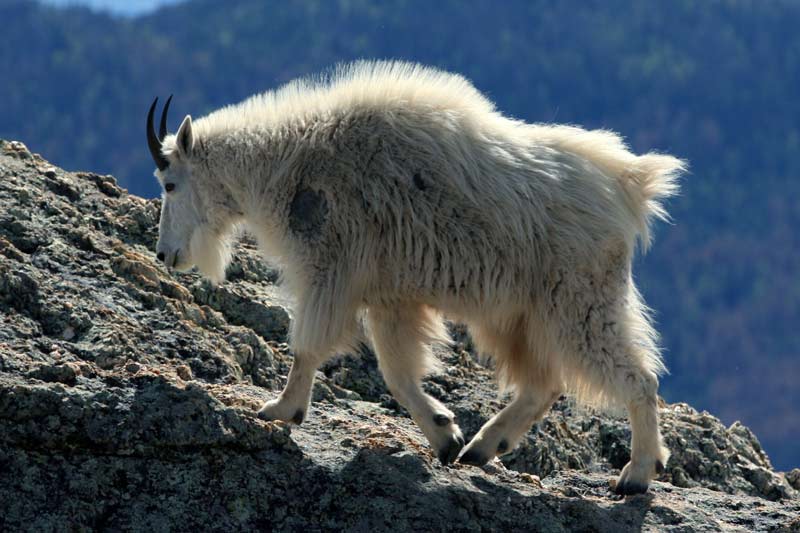Scientific Name:Oreamnos americanus
Population Worldwide: est. 100,000
Population in British Columbia: est. 50,000 to 55,000
Age Expectancy: 12 Years
BC Book minimum score: 49”
BC Record: 57 4/8”
B&C minimum score: 50”
World Record Score: 57 4/8”
Judging a Mountain Goat:
Mountain Goats are one of the hardest animals to judge in North America, both Nannies and Billy’s have similar length horns. Female’s horn are smaller but usually by only a few inches overall. For this reason many fish and wildlife groups allow the harvesting of female goats due to the difficulty of judging the sex quickly in the field. They however recommend hunters to focus on harvesting Billy’s only due to herd management. Nannie’s very rarely make any record books because they lack the mass needed to score high.
To properly judge a Mountain Goat you need to look at few different characteristics of the horns and body. Usually a trophy goat is alone or with one or two other Billie’s. Another factor to keep in mind is that normally a trophy goat will be a loner. Even though a goat is alone doesn’t mean that it is a trophy, it often helps to judge a goat against another smaller Billy.
First thing to do is compare the length of the horn to its face, if it is shorter then its face then let it pass, a small goat not trophy quality yet. My preferred way to judge goats is by comparing the length of horns to the ears. If its horns are 2.5x the length of the ears then it is a trophy quality goat, usually in the high 9” range. Next thing to do is judge it’s bases and mass, to judge the bases, compare them to the eye, if it is 1.5-2 times as thick as the eye then it will be a trophy goat. Most goats score high because of the mass, inspect how well the goat carries its mass throughout their horns. A smaller goat will lose the mass half way up, whereas big trophies carry their mass all throughout their mass. Looking at the record books the best scoring goats have the highest bases and mass. I personally tell clients that a 9” goat is average quality and I try to harvest goats in the 9.5” length range with mass that carries throughout the horn. Goats which carry their mass well will score higher than a longer goat which doesn’t have the mass. I look for bases being a minimum of 5 ¼ inch bases, it can be hard to judge bases without a high-quality spotting scope because of the scent glands.


